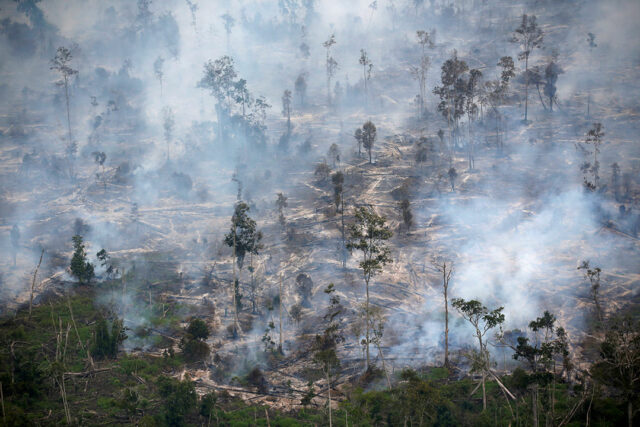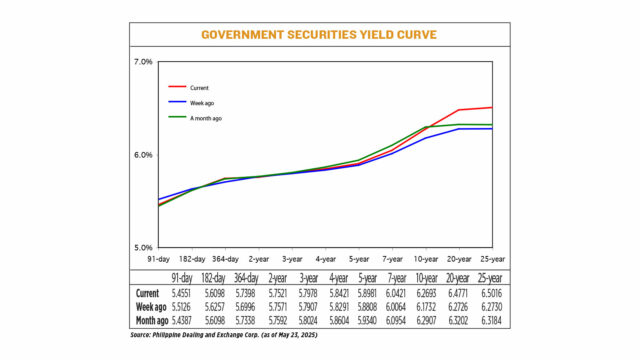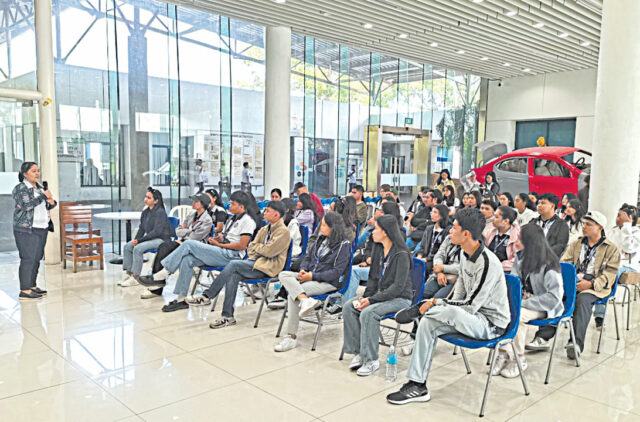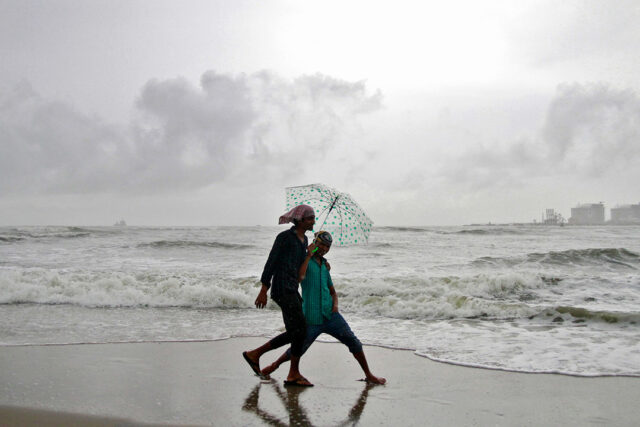The BusinessWorld Economic Forum 2025, “Unlocking the Philippines’ potential,” held on May 22, focused on assessing the Philippine economy (where are we now?), exploring key risks, emerging opportunities and the evolving landscape across sectors.
Department of Economy, Planning, and Development (DEPDev) Secretary Arsenio M. Balisacan said in his keynote speech: “The Philippine economy today stands at a crossroads. We find ourselves at this juncture, and significantly, when various developments and trends affect all economies, large and small… We live in a time of profound transformation, where influential megatrends disrupt the global landscape, posing risks but presenting opportunities to economies such as the Philippines. These forces are interconnected, complex, and dynamic, pushing nations to adapt, innovate, and position themselves strategically.”
Secretary Balisacan boasted of the full-year 2024 GDP growth rate of 5.6% and the decline of inflation to 1.4% as of April 2025 — better than targets. “But PH growth has relied more on factor accumulation while its ASEAN neighbors’ formula has been Total Factor Productivity (TFP),” he said. Factor accumulation is an increase in the quantity of a factor, usually capital or sometimes human capital, according to the University of Michigan. TFP measures the efficiency of labor, capital and other countable inputs. TFP tells us how much can be produced without adding more inputs — the “secret sauce” of how a business is run, according to the US Bureau of Labor Statics.
We have to revise strategies for the medium to long term, Secretary Balisacan, on quality education, food security, connectivity such as infrastructure to promote inclusion, and innovation. “It’s not about catching up (with our ASEAN neighbors) but sustaining growth,” he added.
ASEAN+3 Macroeconomic Research Office (AMRO) Senior Economist Andrew Tsang, the second keynote speaker at the BusinessWorld forum, concurred that boosting the Philippines’ economic productivity is key to achieving a higher income status. The more critical growth measure of gross national income (GNI) per capita ($4,230 in 2023, up from $3,950 in 2022) places the Philippines in the lower-middle income status.
Mr. Tsang said the Philippines could get upper middle-income country (UMIC) status by 2026 if GNI per capita increases by 6.8% from the 2023 level. World Bank Group Lead Economist and Program Leader for the Prosperity Unit for Brunei, Malaysia and the Philippines Gonzalo Varela earlier said the Philippines is more likely to achieve UMIC status by 2027. Mr. Balisacan has said the economy needs to grow by 6% until next year to achieve their targeted UMIC status.
Frederick Go, special assistant to the President for investment and economic affairs, and third keynote speaker at the BusinessWorld conference, cited the Philippine Development Plan (PDP) 2023-2028, which aims “for deep economic and social transformation to reinvigorate job creation and accelerate poverty reduction by steering the economy back on a high-growth path.” “This growth must be inclusive, building an environment that provides equal opportunities to all Filipinos, and equipping them with skills to participate fully in an innovative and globally competitive economy,” he added.
The Public Financial Management (PFM) Reforms Roadmap 2024-2028 also seeks to harmonize policies across government agencies and promotes transparency in the use of public funds, in line with PDP 2023-2028. It addresses 11 strategic focus areas that cover all PFM aspects, including planning and budgeting linkage, cash management, public asset management, accounting and auditing, PFM capacity development, digital PFM, PFM policy and legal framework, public procurement, disaster risk reduction and management, PFM for local government units (LGUs), and monitoring and evaluation for public expenditure.
Secretary Go proffered the Corporate Recovery and Tax Incentives for Enterprises to Maximize Opportunities for Reinvigorating the Economy (CREATE MORE) law, which is expected to effectively position the Philippines as a key investment destination in the new global order.
Yes, all three keynote speakers at the conference worried about the shifting global alliances and trade relationships, even geopolitical shifting and the trend towards protectionism, perhaps initiated and exacerbated by the tariff controls and changes by US President Donald Trump. Will there be a trade war among and between nations?
Bangko Sentral ng Pilipinas (BSP) former Deputy Governor Diwa Guinigundo, a panelist at the BusinessWorld conference, explained that Trump had domestic economic problems to address, for which he envisioned the drastic tariff increases on foreign trade partners to be the solution. He wanted to be “good-looking” to the American people by his “MAGA” (Make America Great Again) mantra of redeeming governance. MAGA means less taxes on Americans, but more taxes on foreigners. Less imports for the US, because the US will be going to manufacture and produce its own goods and services to boost local production and labor.
Governor Guinigundo pointed out that the 17% reciprocal tariff rate imposed by Trump on the Philippines as of May 22 is the lowest in the ASEAN 5, except for Singapore. This is an advantage for competitiveness in exports, specially that China and the EU have been slapped the most shockingly high tariff rates by the US.
In an analysis soon after Trump assumed his second term (Biden term sandwiched between) as US President, economist Bernardo M. Villegas said: “The Philippines will be one of the least negatively impacted by the global economic slowdown that will be precipitated by the tariff wars that US President Donald Trump has already launched so very early in his presidency.”
He continues: “The Philippines is practically immune to global economic crises because of its very low export-to-GDP ratio, which currently stands at 27%, compared with the 100% to 150% of neighbors like Singapore, Hong Kong, Vietnam, etc. Our weakness in global trade becomes a strength during times of crisis. As practically all large, medium and small enterprises in the country can attest to, their business predominantly depends on domestic demand generated by 120 million people residing in the country.
“Consumers will continue to be loaded with purchasing power from the $40 billion of OFW remittances, which will have greater purchasing power because the exchange rate will continue to depreciate at the P58 to P59 level,” Mr. Villegas said. “The moves of the Trump government to deport residents will hardly include Filipinos in the US because they don’t belong to the ‘criminal illegal immigrants.’ In fact, they are among the most helpful to the American public as nurses, caregivers, tourist workers, teachers, and even IT professionals,” he added.
And so, much of the panel discussions at the BusinessWorld economic forum echoed optimism for the potential of the Philippines to rise in competitive development with its ASEAN neighbors, despite the challenges in the near term. Energy Undersecretary Rowena Guevara and Energy Regulatory Commission CEO Monalisa Dimalanta, both panelists, assured the conference that the government has defined and strategized energy needs and directions of the country. “We are No. 1 in policy. The execution depends on the private sector,” Ms. Guevara said.
The private sector represented at the conference presented their own plans and actions in line with government economic programs, and in view, of course, of their own microeconomic and profit goals. Ruben J. Pascual, secretary-general of the Philippine Chamber of Commerce and Industry, stressed “the importance of digital infrastructure, connectivity, digital education, skills and digital governance sovereignty to strengthen the country’s position in areas such as trade, technology and human capital development.”
Mr. Pascual deplored the weakness of the agricultural sector and the decline of the manufacturing sector, which would have been strong and sure pillars sustaining economic growth. He summarized the compounded failures of the Arroyo, Aquino, Duterte and Marcos administrations in:
1. Poverty and inequality: metrics versus inclusive development; bureaucratic delays and corruption.
2. Infrastructure deficits: slogans versus performance
3. Fiscal irresponsibility: corruption
Alfredo Panlilio, president of the Management Association of the Philippines (MAP), and Eduardo Francisco, president of BDO Capital, agreed with Mr. Pascual that skill set changes are needed to educate and retrain the workforce. There is also a need to harness critical thinking and the single-mindedness of the country towards a shared, inclusive long-term socioeconomic vision.
“Unlocking the Philippines’ potential” was a tough issue to tackle at the BusinessWorld Economic Forum 2025.
On the same day, breaking news announced that President Ferdinand “Bongbong” R. Marcos, Jr. had asked his entire Cabinet and direct-report assistants to the President to submit courtesy resignations.
The Presidential Communications Office (PCO) said the request for resignations would give Mr. Marcos “elbow room to evaluate the performance of each department and determine who will continue to serve in line with his administration’s recalibrated priorities. With this bold reset, the Marcos administration signals a new phase — sharper, faster and fully focused on the people’s most pressing needs.”
“The move comes following the poor performance of administration-backed senatorial candidates in the May 12 midterm elections, and amid global uncertainties due to trade concerns that could threaten the Philippine economy.” But what now, of the continuity of plans and programs designed and already ongoing, by the Cabinet and think-tanks/assistants of the President?
At the BusinessWorld Economic Forum 2025, it was sadly not discussed (because of coincidental timing of the news) that politics would trump patriotic, long-term economic planning and strategizing for the sustainable and inclusive socioeconomic development of the country.
Amelia H. C. Ylagan is a doctor of Business Administration from the University of the Philippines.
ahcylagan@yahoo.com











